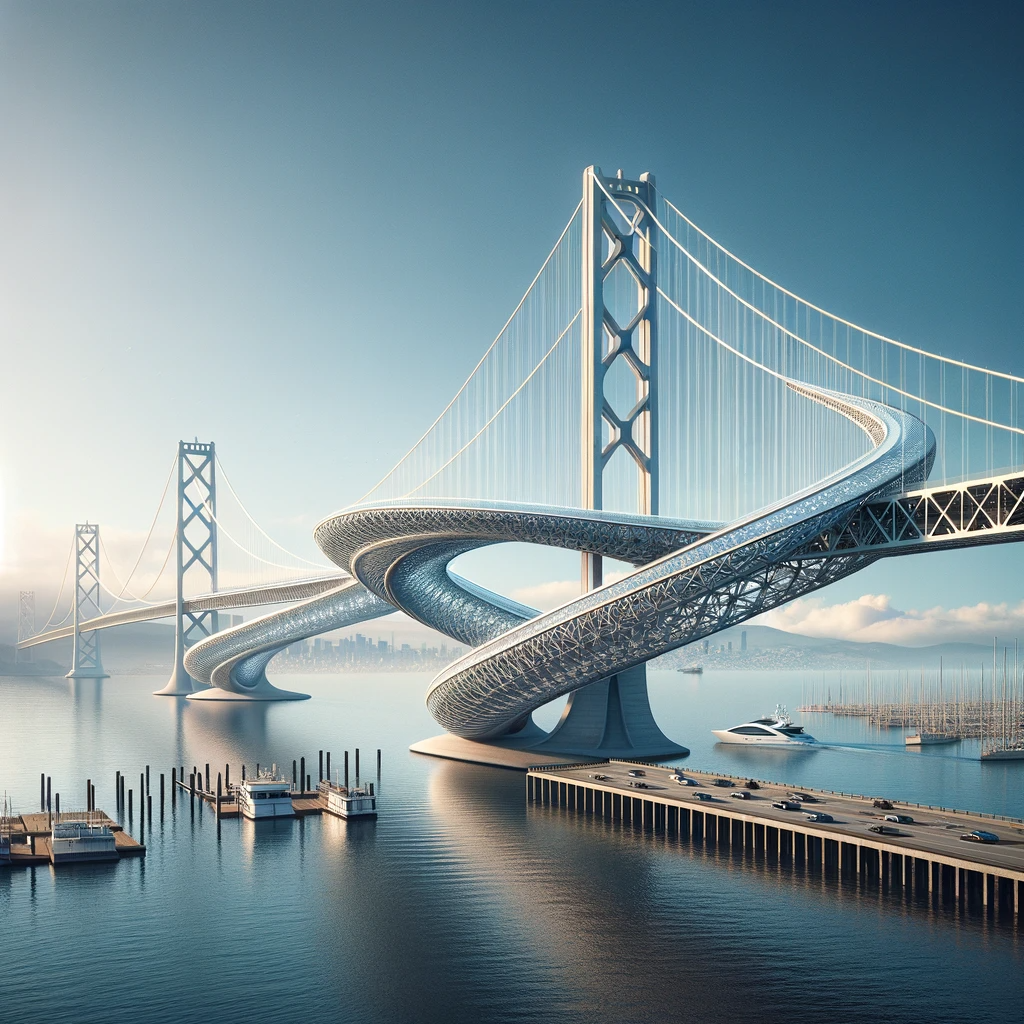Zero-weight bridges
Imagine a world where bridges defy traditional engineering constraints, floating effortlessly above waterways without the need for supports or suspension cables. This is not a scene from a science fiction novel; it’s the vision of a groundbreaking bridge design that could change the face of civil engineering and architecture.
The Genesis of an Idea
A decade ago last week, I invented a novel material I called “carbon foam”. Made of graphene spheres with vacuum interiors, it boasts a density similar to helium, its high buoyancy at ground level making it possible to make virtually weightless structures. With very many possible applications, from floating Avatar-like islands in the sky to my Sky Lines hypersonic air travel and tethered floating architecture, this material laid the foundation for a new era in construction, where the impossible becomes possible.
Adapting the Vision
The idea soon evolved, allowing for non-spherical containment and variable density. By simply pumping air in or out of a sealed structure, still made of graphene with intricate, flowing internal structure, the sort we’re rapidly becoming accustomed to AI designing, the material’s weight can be adjusted, paving the way for structures that are both light and adaptable.
A Bridge Like No Other
Enter the bridge concept: a single-span structure, free from the constraints of weight. This design eliminates the need for support columns, allowing for construction from one end to the other, as long as desired. Picture the San Francisco Bay, graced by a new single span bridge, a single gentle arc sitting elegantly alongside its historic counterpart, but without any suspension or columns.
Furthermore, it can be constructed from one end, all the way across, the entire arc only connected at one end until the final days when it is joined to the highway at the other end.
Tackling the Wind
A key challenge for such a structure is wind. Traditional bridges use heavy materials and suspension cables to counteract wind forces, but this innovative design demands a different approach. Enter adaptive aerodynamics, powered by AI. Structures such as spirals and aerofoils, dynamically adjusted by AI algorithms, would balance and greatly reduce the wind load, ensuring stability and safety.
The Warren Truss: An Old Friend Revisited
The Warren Truss, a design known for its stability and strength, finds new life in this concept. In a weightless world, its potential is fully realized, offering unparalleled structural integrity without the burden of heaviness.
But we have AI now, so we can start with the Warren Truss as inspiration and use AI to simulate far more elegant, aesthetic and curvy mesh solutions to the various forces. Then, having used adaptive AI aerodynamics to reduce wind forces, the new meshes could produce bridges that are very beautiful and minimalist.
This is not just about creating a functional bridge; it’s about crafting a piece of art. AI simulations enable the design of aesthetically pleasing structures that are both simple and beautiful. The bridge’s design, while serving its primary function, would also stand as a testament to the harmonious blend of technology and art.
I tried to get a pretty AI illustration of a new San Francisco Bridge, but since AI draws its inspirations mostly from existing imagery, every attempt it made still had support columns or suspension structures.
Here is one of the better ones. After several more attempts very, very clearly explaining the requirements, I lost patience:

A Visionary Future
This bridge would be more than a pathway over water; it would blend our past and future where traditional design principles meet cutting-edge technology. It’s a promise of what can be achieved when we dare to reimagine the foundations of our world.






